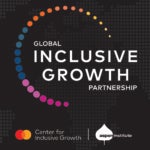The Next Move is a series that explores the critical choices facing business leaders as they respond to the extraordinary impacts of COVID-19, bringing a diverse array of expert voices into dialogue across digital media. This is the first of a two-part blog on this topic, with a follow-on webinar which was held on Thursday, March 18th at 12:00pm ET.
The business community has a clear and present mandate to play a leading role in closing racial economic gaps in America. As a wealth generator, product designer and employer, corporate America has enormous leverage. There are few sectors of society that can move as much capital and change the future prospects of so many – but doing so will require more than traditional philanthropic corporate giving.
The challenge is dire and complex:
- As reported by Citi, the racial wealth gap has cost the US economy $16 Trillion in lost wages and economic activity in the last twenty years.
- The coronavirus has disproportionately affected communities of color and women of color – with millions dropping out of the workforce and potentially taking decades to recover their wage earning potential.
- It is now widely recognized that current racial economic gaps are the product of generations of both overtly racist public policies and more hidden biases embedded in choices, policies, and norms inside companies. The racial wealth gap is now so large that small incremental actions are not going to make up enough ground. Large, expansive, intense actions by every sector of our society is necessary.
The public now expects business leaders to help solve our most important societal challenges. To tackle the racial wealth gap, business will have to bring to bear operational, systemic and financial choices to directly address the roots of inequality, without falling back on the need for ‘policy to come first’.
In the face of such high expectations and such a massive challenge, what should companies do? What should they prioritize? Here, we present the first part of a series of responses about what organizational leaders can – and should – be doing to drive change from within to address racial wealth gaps. These actions must be paired with new ways of leading and new kinds of leaders need to emerge – to co-create, to deeply listen and to move their organizations forward.
Get Capital Flowing to Black, Latinx and Indigenous Founders
In order to address the systemic economic disparities facing communities of color, the business community should first take a look at whose ideas, portfolios and consumer needs are not getting funded, and why. We at Illumen Capital believe implicit bias serves as a structural barrier preventing the flow of capital to entrepreneurs and fund managers who have long been overlooked and underestimated – namely Black, Latinx and Indigenous founders. Our research, in collaboration with Stanford SPARQ, suggests that professional investors struggle to properly evaluate Black fund managers simply because of the color of their skin, and this bias becomes more entrenched as those Black managers perform better.
While there are a host of ways business can address racial economic gaps, we encourage a closer examination of how businesses are getting funded in the first place. We believe an inclusive and optimal asset management industry will be the cornerstone of an equal and equitable future. Racial bias is a structural problem, and is deserving of a structural solution.
— Daryn Dodson, Managing Director, Illumen Capital & Board Member, Ben & Jerry’s
Use All of the Tools Available to Address the Racial Wealth Divide
Systemic racism is a tragic part of America’s history. Business leaders can do more to break down systems that have propagated racism and widespread economic inequality, especially for Black and Latinx people. Addressing structural racism will also require strong partnerships with policymakers to remove barriers that have historically prevented Black and Latinx Americans from accessing economic opportunity – from jobs to entrepreneurship and financial health.
At JPMorgan Chase, we’re using our expertise in financial health, small business, and home lending to serve Black and Latinx communities and address key drivers of the racial wealth divide through a $30 billion, five-year commitment and by advancing public policy solutions that address the drivers of the racial wealth divide. For instance, with these new efforts that include loans, equity and direct funding, we expect to originate an additional 40,000 home purchase loans for Black and Latinx households, provide an additional 15,000 loans to small businesses in majority-Black and -Latinx communities, and help one million people open low-cost checking or savings accounts.
— Heather Higginbottom, President, JPMorgan Chase Policy Center
Reconstruct Corporate Accounting Around What Matters Most
It is time to reframe corporate “success” and to reconstruct EBITDA. As immoveable and inevitable as Interest, Taxes, Depreciation and Amortization are—the difficult-to-measure but dire questions of dignity, fairness and social impact matter more. They cannot play second fiddle. To position dignity, fairness and social impact at the bottom of a waterfall of concerns is a clear statement of our priorities. We must reorder everything. We must restore consideration of a company’s morality—to where it belongs. Yes, dignity, fairness and societal impact are challenging to measure, but they are first order questions and the key to real value.
In 2020, large companies enjoyed stock appreciation even in a moment of extreme economic hardship for most Americans. An enterprise on Main Street with a workforce that cannot reliably put food on the table is not deemed a success—and would never be admired, studied or emulated. On Wall Street it is a common occurrence. What will it take for stock traders to connect the plight of employees to value in any real sense?
— Abigail Disney, Filmmaker, Philanthropist and Social Activist
Apply Investment Principles to Bolster the Effectiveness of Corporate Pledges
As an ESG-oriented impact investor, I seek to maximize risk-adjusted returns and positive externalities, otherwise known as positive social benefits. If corporations apply those same impact investing principles to pledges made following the death of George Floyd in the Summer of 2020, they could benefit not only Black people, but the entire American economy.
Every corporate leader should start by investing time, not just money. C-Suite executives should read former Harvard Business School Professor and Morehouse College President David Thomas’s “Race Matters” — TWICE — for advice on how to help Black employees thrive. That would reduce the racial wealth gap while diversifying the company’s workforce, which has been shown to increase innovation and profits.
Corporate investors should start by investing with Black-owned asset management firms, which are more likely than white firms to invest in racially diverse companies. At Ford, we do. According to McKinsey, racially diverse companies outperform homogenous white companies by 36 percent; while closing the wealth gap for Black Americans would add a whopping $1.5 trillion to our economy each year. Applying impact investing principles can generate returns that ripple beyond individual corporations and make a meaningful difference for all Americans!
— Roy Swan, Head of Mission Investments, Ford Foundation
The 2-cent Solution: A Call for U.S. Companies to Invest in Black Communities
If just 2 cents of every dollar earned by U.S. corporations was reinvested in Black owned financial institutions and businesses, the racial wealth gap would close at a historic scale. While the Black/white wealth gap is 13:1; this disparity shrinks to 3:1 when comparing white and Black business owners. Black-owned banks locate and lend in Black communities at significantly higher rates than white-led financial institutions. Investing in Black financial institutions and Black businesses directly translates into jobs and economic growth in Black communities.
Our experience at HOPE, a Black-owned credit union serving the Deep South, underscores the effectiveness of aligning resources with need. Just last year, anchored by support from Goldman Sachs, HOPE made more than 2,900 Paycheck Protection Program loans. Many of these were made to Black entrepreneurs and nonprofit service providers in majority Black communities – vital employers that were repeatedly overlooked by traditional lenders.
The health, economic and racial crisis facing America has crystalized the importance of transcendent action at this critical moment in history. The 2% Solution offers a guide for moving forward: Make substantial, sustained and targeted investments that equip Black communities to thrive.
— William Bynum, CEO and Founder, HOPE
(Hope Enterprise Corporation, Hope Credit Union and Hope Policy Institute)
Use Collaborative Inquiry to Drive Racial Equity
This is not the first time we have seen a call for economic racial equity, but despite efforts across a variety of sectors aimed at addressing this disparity there has been little progress. How can we ensure that this time will be different? Individual action and isolated initiatives will not be enough to impact persistent and systemic challenges like economic racial inequality. Organizations that are truly invested in making a difference will be the ones that identify opportunities to align core business operations, in ways that not only support but drive a commitment to racial economic equity. Efforts to educate individuals must be paired with a process of collaborative inquiry that leads to discoveries that shift the culture of the organization.
Cross-functional teams, reflecting the diversity of stakeholders, must be empowered to explore questions like “What impact could closing racial economic inequality have on our core business activities? How are our operations contributing to the problem of economic inequality, and how can we shift to reduce this impact?” The more that organizations allow their commitment to closing the racial economic gap to influence the core of their business as much as it impacts the economic disparity itself, the closer we will be to achieving real and sustainable change.
— Katherine Lampley, Chief Diversity and Inclusion Officer, Bentley University
Recognize the Opportunity Right in Front of You
A recent study confirms the total economic contribution of Latinos in the United States—the Latino GDP— went from $1.7 trillion in 2010 to $2.6 trillion in 2018, and it is expected to grow to $3.0 trillion by 2022. If the Latino community in America were an independent country, it would be the eighth largest economy in the world, comparable to India and larger than Italy, Brazil or South Korea’s GDP. Additionally, from 2010 to 2018, Latino real consumption in America grew 133% faster than non-Latino consumption. It is the Latino community’s demographic growth, youth, entrepreneurship, and productivity that has driven the total American economic growth during the last 12 years.
Investing in Latinos increases long-lasting profits and failing to include Latinos in Corporate America is literally ‘money being left on the table’. Race-based disparities in education, underinvestment in local businesses, and lack of access to capital in diverse communities compounds this problem and deepens inequalities. To rectify this, business leaders should start by developing robust supplier diversity programs and monitor actual contracts and dollars awarded. Boards should focus on recruiting and retaining diverse Directors (and employees, especially managers) and creating VC programs that invest in diverse businesses, with an emphasis on Latino leadership.
— Dorene C. Dominguez, CEO and Chairwoman, Vanir Group & Board Member, CIT
 Special Thanks: This edition of The Next Move was developed as part of the Global Inclusive Growth Partnership, a collaboration between the Aspen Institute and the Mastercard Center for Inclusive Growth. Be on the lookout for a follow-on Next Move webinar that explores how to put these insights into action.
Special Thanks: This edition of The Next Move was developed as part of the Global Inclusive Growth Partnership, a collaboration between the Aspen Institute and the Mastercard Center for Inclusive Growth. Be on the lookout for a follow-on Next Move webinar that explores how to put these insights into action.


